20 Best Historical Sites
to Visit in the Philippines
Travel to the archipelago of the Philippines, comprising 7,641 islands, a trove of natural beauty and historical sites that have helped shape the nation's identity. Get tempted by the astounding chateaux, cathedrals and other great reminders of the bygone eras by visiting the popular historical sites in the Philippines. Over the years, people have grown fond of historical places, as they help them learn about the various layers of the past and the events that occurred. Scroll down below to learn more about these historic sites and the architecture of the Philippines buildings.
Why Visit the Historical Sites in the Philippines?
Historical sites play a crucial role in bridging the gap between tourism and education. The rich history of the Philippines will help you know about the events that took place and their influences in shaping the peasant cultural identity of the country. Starting from the Pre-Colonial Period to the Post-Independence Period, this country has witnessed a series of events that have influenced the modern Filipino lifestyle. The architecture of different houses and buildings helps in depicting the rich architecture and culture of that period. Get to explore the iconic attractions, allowing you to understand the Philippines' architecture.
20 Best Historical Sites to Visit In the Philippines
Around the Philippines, numerous historical places merit a visit, but we have handpicked some of the best ones for you. Here are the 20 best historical sites to visit in the Philippines, which will help you learn about the country's rich history and cultural heritage.
Fort Santiago
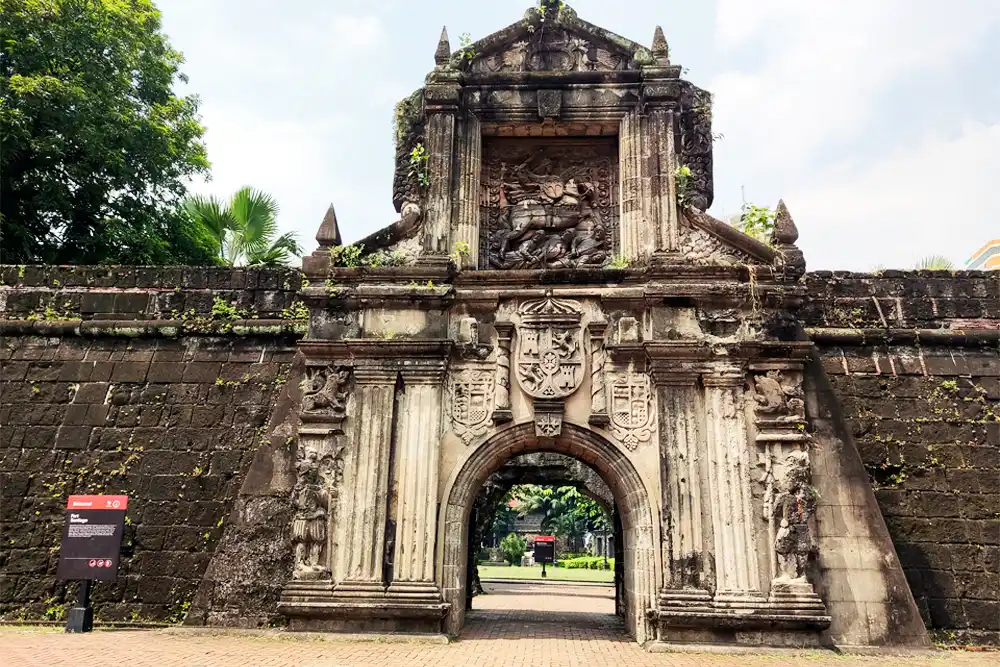
Visit Fort Santiago, one of the oldest fortifications in Manila, which the Spaniards built. It is also a UNESCO World Heritage Site, which was earlier used by the American and Spanish forces, who used it as a fort and prison. Currently, it is a shrine in honour of Dr. Jose Rizal, a Filipino nationalist whose political writings inspired the Philippine Revolution. This historical landmark serves as a testimony to the lives of those who fought for Philippine freedom.
Location: Intramuros, Manila
Year of Establishment: 1593
Entry Fee: Yes
Intramuros
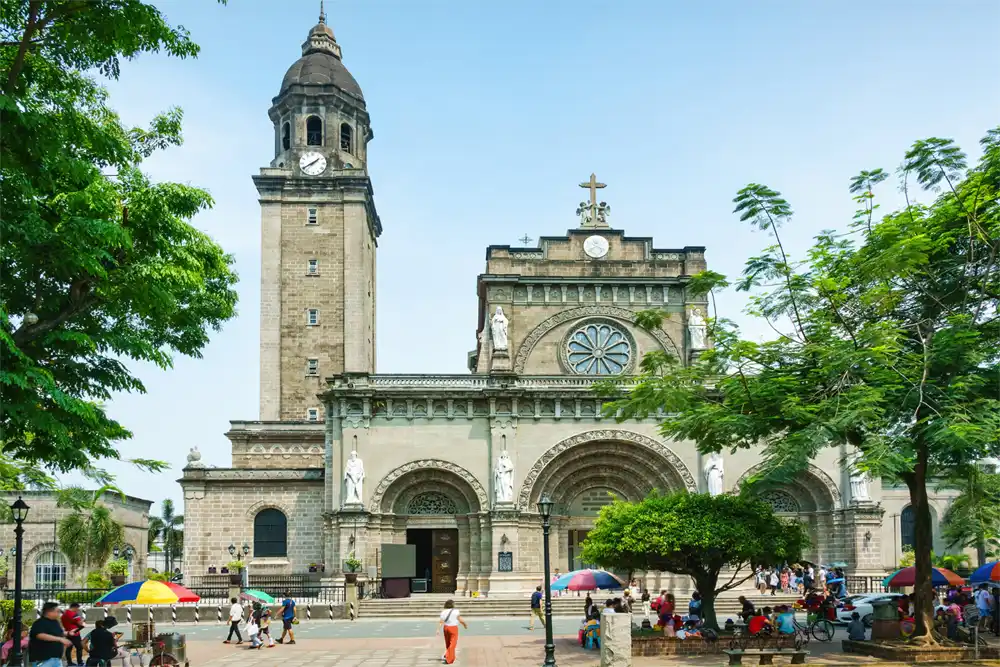
Intramuros is also called the walled city and is a popular tourist attraction. Built back during the Spanish colonisation, it holds some of the popular points of interest like Manila Cathedral, Fort Santiago, Casa Manila and many more. You can also see many Art Deco buildings that were constructed there in the 20th century. While walking down the cobblestone streets, you get to see both old and new architectural buildings.
Location: Manila
Year of Establishment: 1571
Entry Fee: No
Read Also: Best Places to Visit in Manila | Manila Travel Guide | Things to Do in Manila | Beach Near Manila
Fort San Pedro
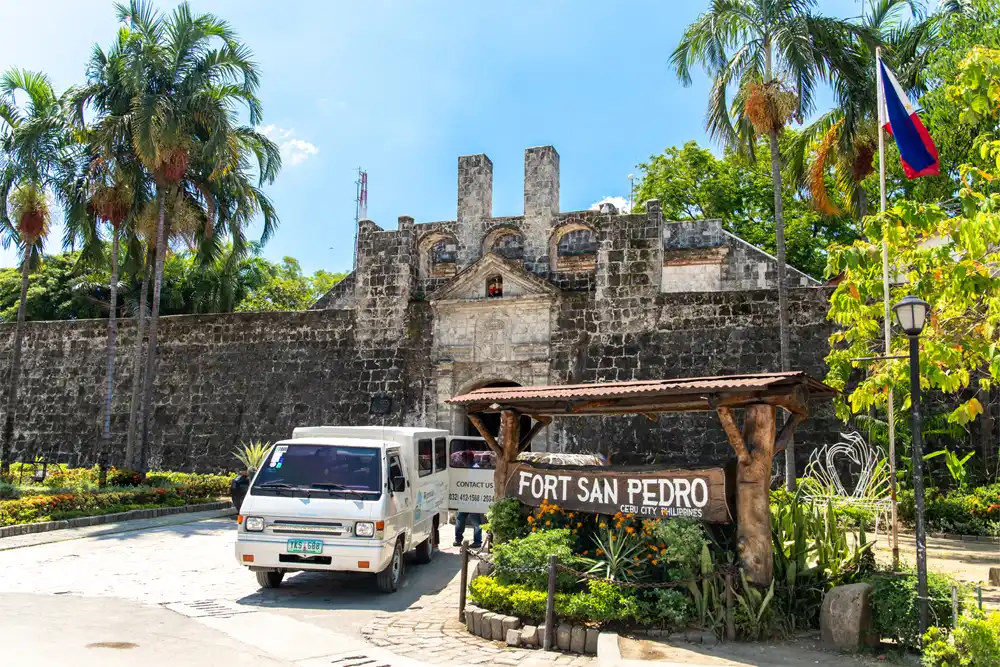
Don't miss the smallest and oldest triangular bastion fort in the Philippines, Fort San Pedro. Renowned for its architectural, cultural, historical, and educational significance, this fort stands as a symbol of pride for the country and also highlights the early periods of Spanish colonisation. Throughout history, this fort has been put to use for different purposes, be it a military defence structure, a prison camp, a rebel stronghold, or even a city zoo.
Location: Cebu City, Cebu
Year of Establishment: 1565
Entry Fee: Yes
Read Also: Travel Guide to Cebu | Things to Do in Cebu | Best Beaches in Cebu
MacArthur Leyte
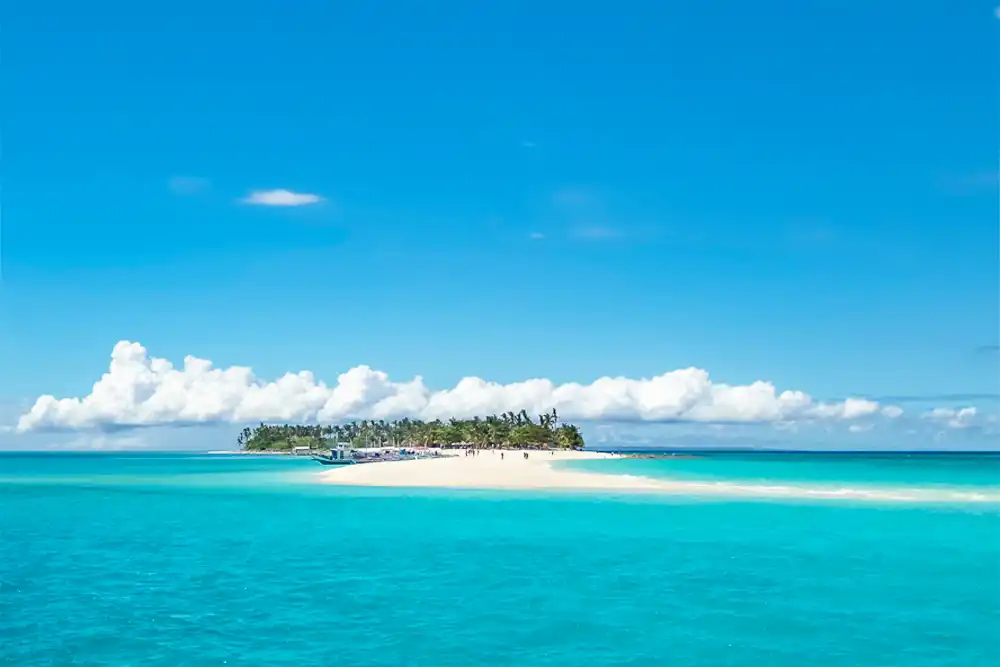
Go to Leyte Island to see MacArthur Leyte, which is a protected area that commemorates the historic landing of General Douglas MacArthur, who played a vital role in World War II. This 6.78-hectare site now serves as a popular tourist destination, and you can also witness seven sculpted figures that depict General Douglas and his entourage on the historic day of landing.
Location: Palo, Leyte Island
Year of Establishment: 1944
Entry Fee: No
Aguinaldo Shrine
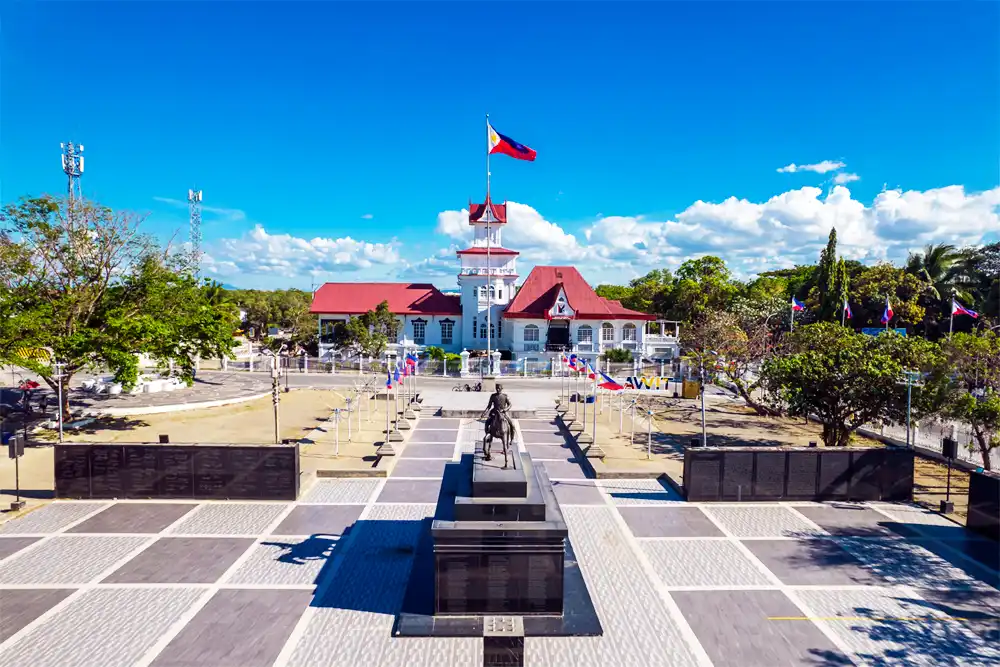
Marvel at the beautiful blend of nationalistic and historical elements of Aguinaldo Shrine, which helps in reflecting the spirit of the Philippine Revolution as well as the Declaration of Independence. You get to find the influences of Art Deco and Art Nouveau, which helped in bringing out the nationalistic themes in a more lively manner. It served as a testament to the 1896 Revolution as well as the 1898 declaration.
Location: Kawit, Cavite
Year of Establishment: 1964
Entry Fee: No
Rizal Park
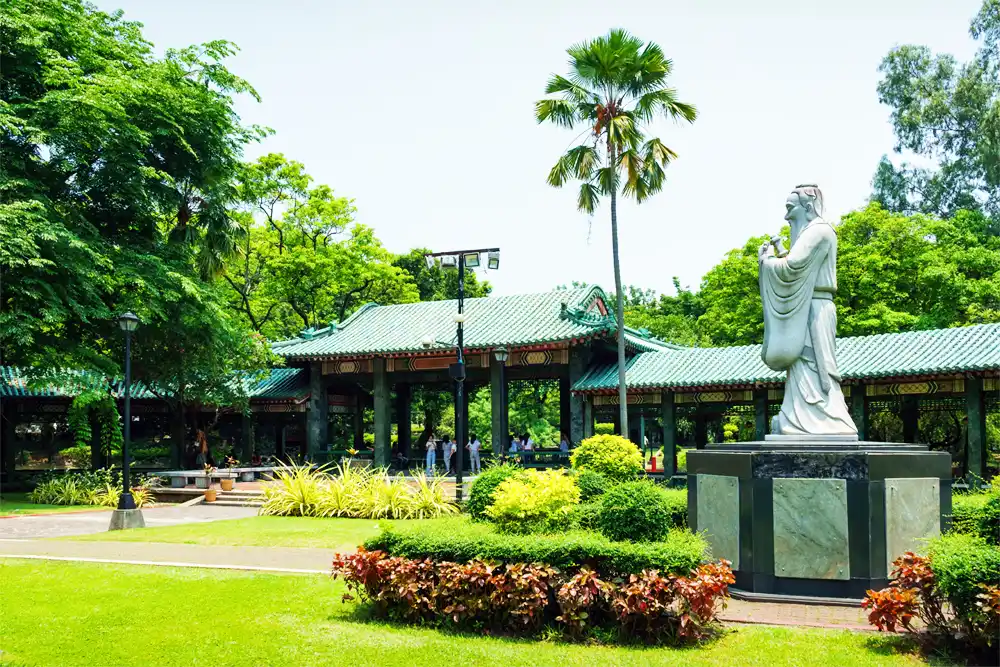
Rizal Park, also called Luneta Park, is a large urban park in Manila which serves as a symbol of the Philippine national identity. The iconic attraction in the Rizal Park is the Rizal Monument, featuring a bronze statue of Jose Rizal, who was executed here. At present, it has become a popular spot for recreational activities, such as enjoying a picnic, or spending leisure time and others.
Location: Ermita, Manila
Year of Establishment: 1913
Entry Fee: No
Quezon Memorial
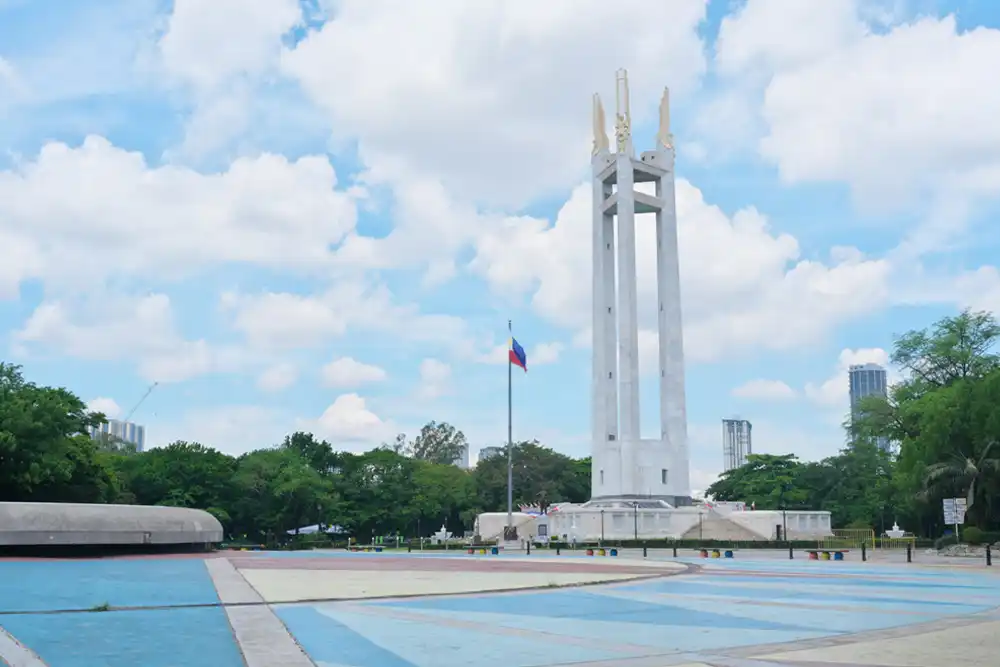
Get stunned by the architectural beauty of the Quezon Memorial, which is known as a large park, housing a museum, shrine and remains of former Philippine President Manuel L. Quezon and his wife Aurora Aragon Quezon. The monument is 66 metres tall, featuring three pylons, depicting the age of Quezon at the time of his death. You can find the elements of Art Deco and Neoclassical architecture present at the building.
Location: Diliman, Quezon City, Metro Manila
Year of Establishment: 1939
Entry Fee: No
Malacanang Palace
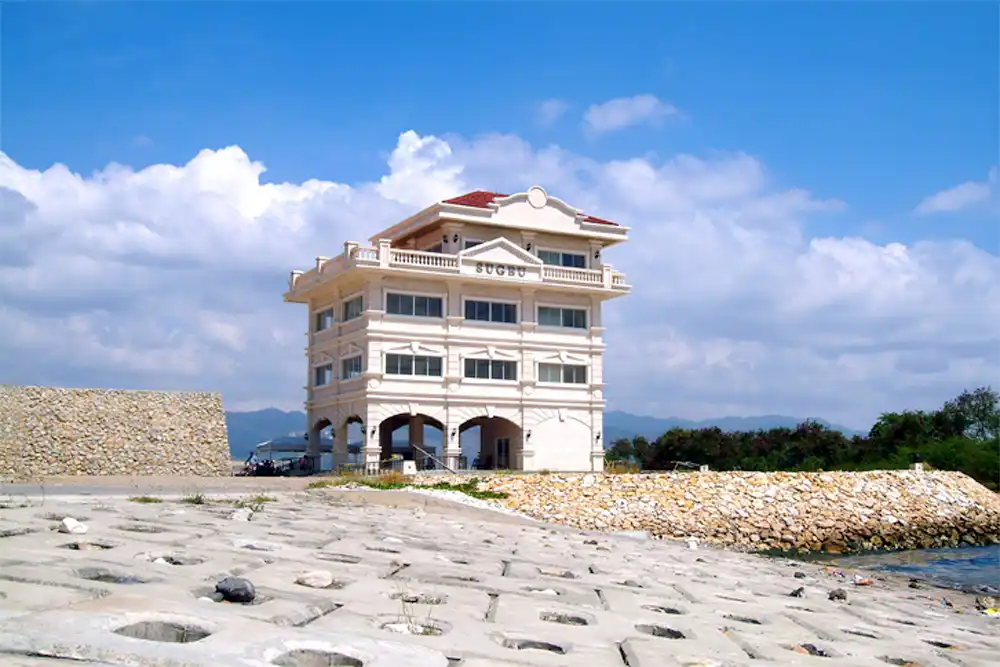
Go to see the official workplace and residence of the President of the Philippines. It is both a historical landmark as well as a symbol of the nation's leadership, which has served as home to leaders since the Spanish colonial period. You can find the architectural blend of neo-classical and Spanish colonial styles reflected by the building. This building also testifies to the journey of the country passing from colonial history towards independence.
Location: San Miguel, Manila, Metro Manila
Year of Establishment: 1750
Entry Fee: No
Casa Manila
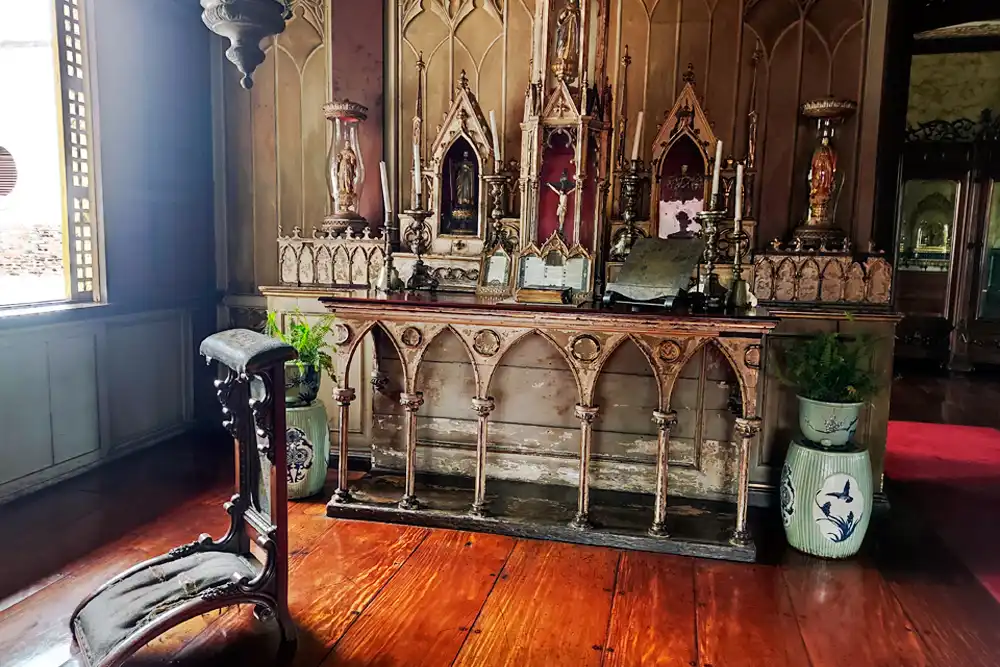
Step back into the late Spanish colonial period by visiting Casa Manila, a living museum, which is located in the Intramuros district of Manila. This building showcases the lifestyle of a wealthy Filipino family during the late Spanish colonial period, characterised by its ambience, furnishings, and architecture. This building serves as a cultural and historical delineation of that period. Some of the things that will grab your attention are the spacious rooms and grand entrance, focusing on ventilation and natural light.
Location: Intramuros, Manila
Year of Establishment: 1571
Entry Fee: Yes
Fort Pilar Shrine
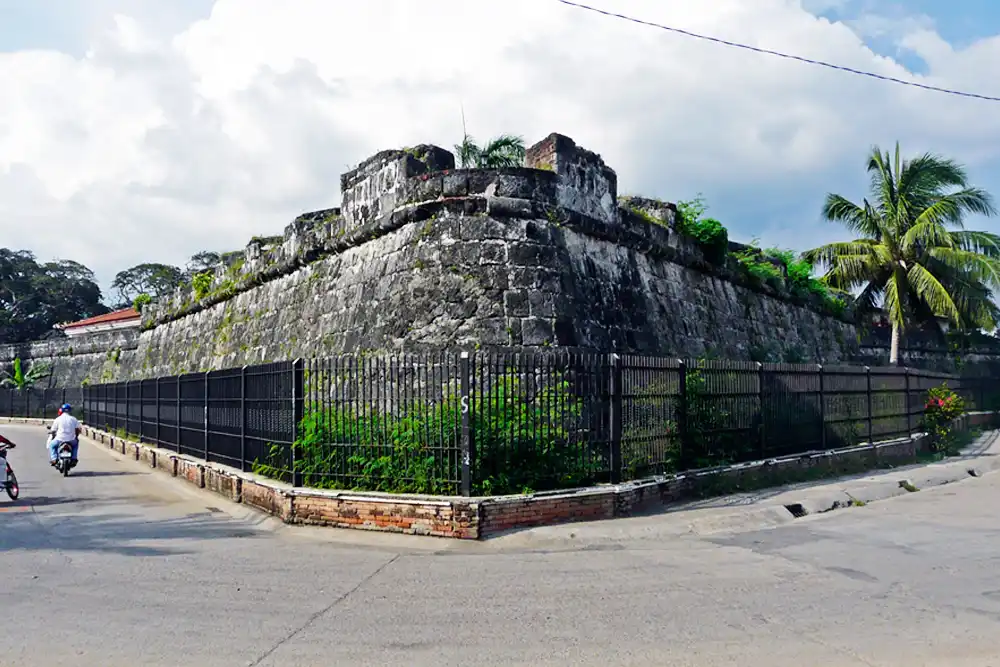
Situated in Zamboanga City, Fort Pilar Shrine boasts both religious and historical significance. Catholic devotees are seen to visit this place because of its spiritual significance, as it serves as a place for prayer and pilgrimage. Similarly, tourists also get attracted to this site because of the stunning architecture and rich history. You will find a blend of local and Spanish colonial architectural styles, which was built as a military defence, but is now dedicated to the city's patroness.
Location: Zamboanga City
Year of Establishment: 1635
Entry Fee: No
San Agustin Church of Paoay
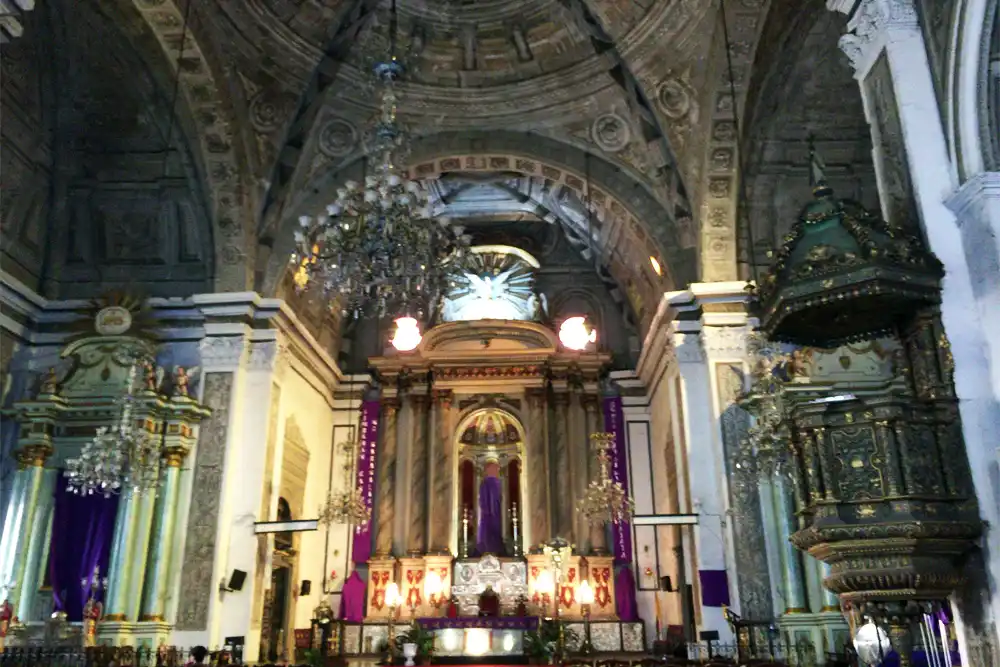
Get captivated by the stunning architecture of San Agustin Church of Paoay, also known as the Paoay Church. It is also one of the oldest churches in the country, along with being a UNESCO World Heritage Site. This building is also known for its unique Baroque architecture and its massive buttresses. Each of these buttresses has been designed to withstand earthquakes, making it an example of Earthquake baroque.
Location: Paoay, Ilocos Norte
Year of Establishment: 1694
Entry Fee: No
Cagsawa Ruins
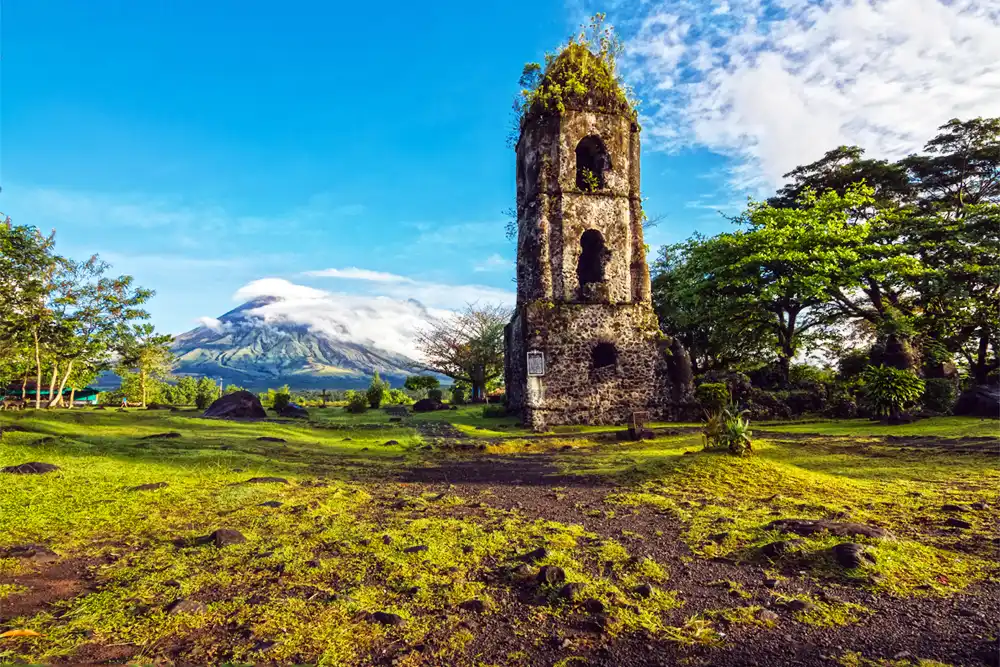
Explore the remnants of the 16th-century church at the Cagsawa ruins, offering both historical significance and a scenic backdrop of the active Mayon volcano. Tourists visit this place to see the ruins of the Cagsawa church, which was built back in the year 1587 and was destroyed in the year 1814 by the eruption of the Mayon Volcano. The remains of the bell tower serve as a testament to both cultural heritage and the power of nature.
Location: Daraga, Albay
Year of Establishment: 1587
Entry Fee: Yes
National Museum of Fine Arts

Another point of interest that attracts tourists is the National Museum of Fine Arts, which was originally the Old Legislative Building, which is renowned for its amazing neoclassical architecture. At present, it is the repository of Filipino art, including prints, paintings and sculptures. There are 29 galleries present in the building featuring works of National artists, contemporary printmakers, sculptors and painters. The building serves as a visual reminder of the rich past of the nation.
Location: Padre Burgos Ave, Ermita, Manila
Year of Establishment: 1901
Entry Fee: No
Lacson Ruins
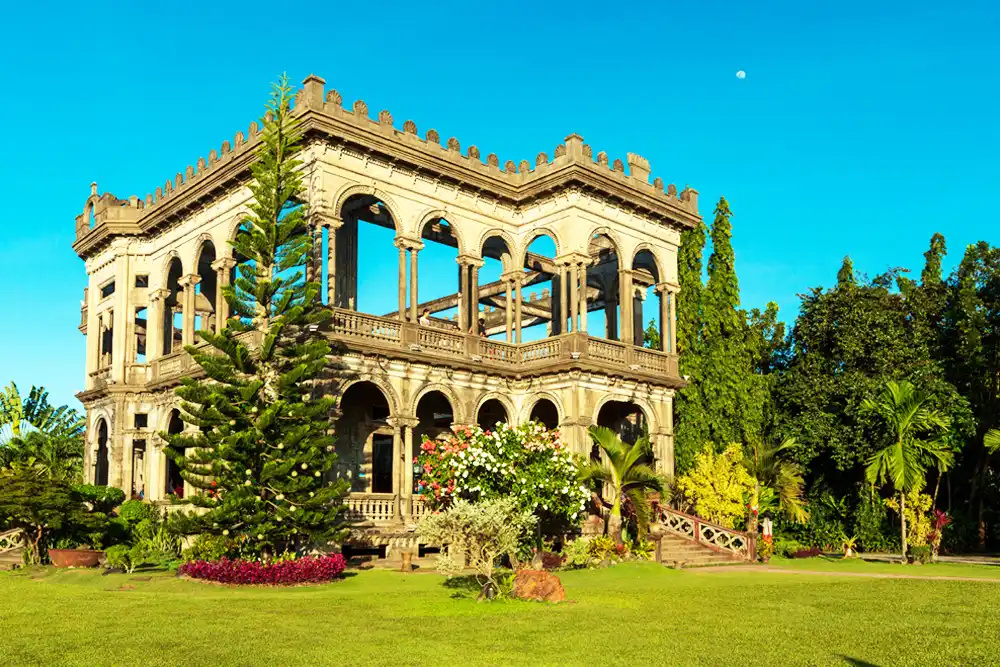
Lacson Ruins, popularly called "The Ruins", is a grand but ruined mansion of Don Mariano Ledesma Lacson, who was a sugar baron. The building has gained fame for its Italianate and Filipino-Spanish architectural styles, accompanied by the romantic history connected to it. Despite being partially destroyed during World War II, the building serves as a testament to the love of the baron for his wife.
Location: Bacolod, Negros Occidental
Year of Establishment: 1920
Entry Fee: Yes
El Hogar Filipino Building
El Hogar Filipino Building, also called El Hogar, is located in Manila, which boasts Beaux-Arts architecture, which also blends Renaissance and Neoclassical styles. This building has witnessed a number of events over the past, surviving World War II and many earthquakes. The building is a four-story building made of reinforced concrete, showcasing intricate details. This building was also one of the earliest skyscrapers in the city.
Location: Binondo, Manila
Year of Establishment: 1914
Entry Fee: No
Cebu Taoist Temple
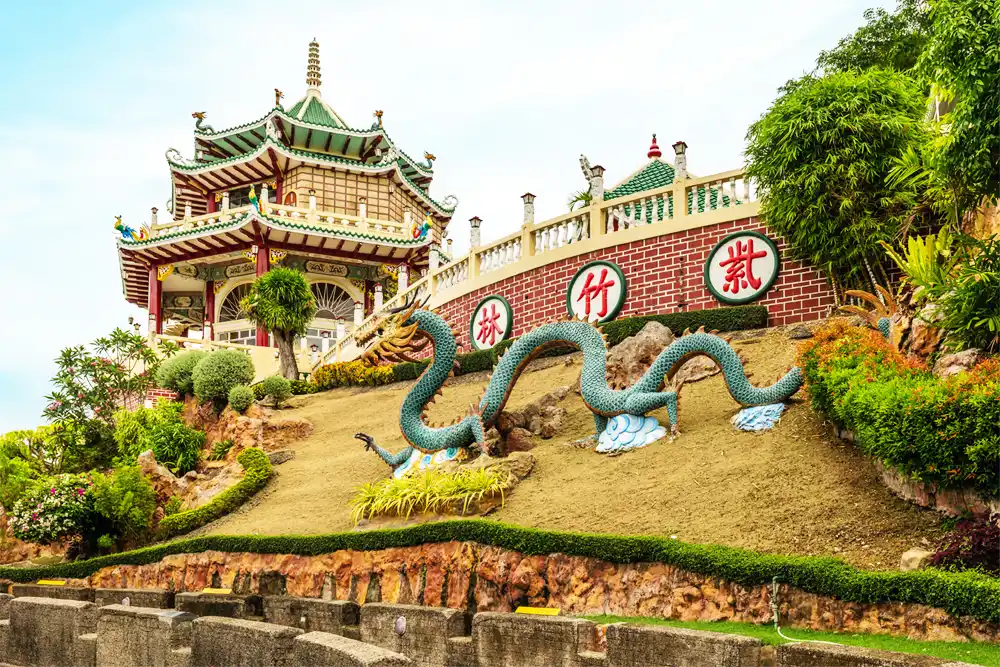
Seeking solace amidst nature, visit the Cebu Taoist temple, which is a unique Chinese-inspired architecture, with a serene atmosphere, along with the center of worship of Taoism. You will get mesmerised by the colourful pagodas, statues and intricate carvings. One can also go there for meditation and gain spiritual reflection. This temple is also the landmark that reflects their practices and beliefs of Taoism. The temple also features a wishing well along with a replica of the Great Wall of China.
Location: Cebu City, Cebu
Year of Establishment: 1972
Entry Fee: No
Pila Historic Town Center
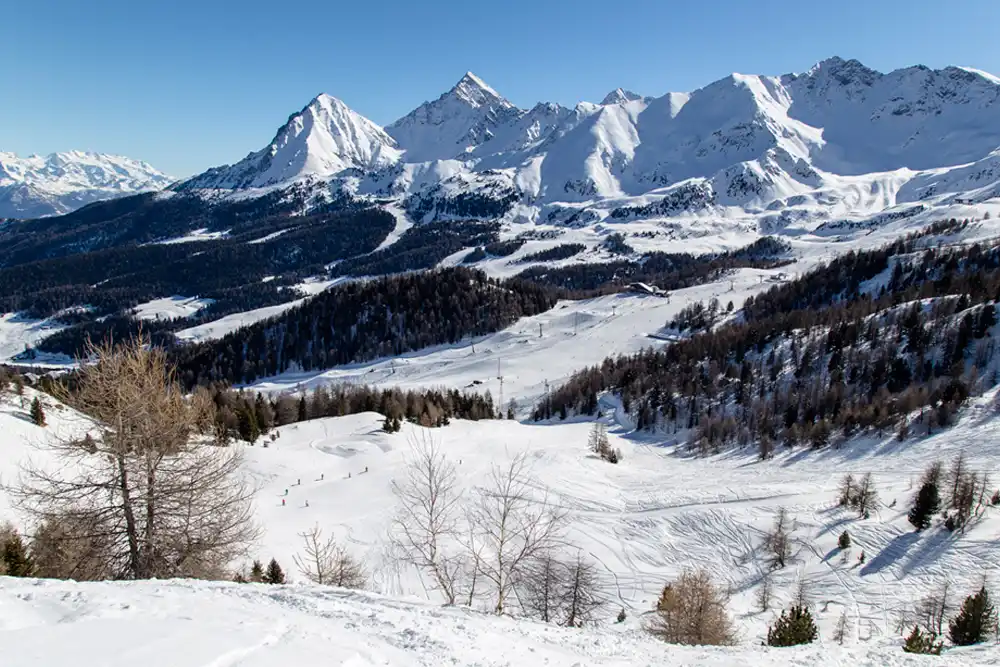
Take a tour of the well-preserved ancestral house at Pila Historic Town Center. The archaeological evidence of this building dates back to the 1st century AD. One gets to witness American and Spanish era architecture. This building also holds historical significance and is also the second printing press. Learn about the history while exploring the well-preserved Spanish colonial architecture.
Location: Pila, Laguna
Year of Establishment: 2000
Entry Fee: No
Cape Bojeador Lighthouse

Cape Bojeador Lighthouse, also called Burgos Lighthouse, is a prominent example of Spanish colonial architecture and is one of the famous historical sites in the Philippines. The architectural importance shows the use of materials of ironwork and red brick. It has played a navigational aid and historical role during the Spanish colonial period. Located by the rocky northern coast, which also offers stunning views and is considered a National Historical Landmark.
Location: Burgos, Ilocos Norte
Year of Establishment: 1892
Entry Fee: No
Balay Negrense
Appreciate the 19th-century Filipino-Spanish colonial architecture that highlights the "bahay na bato" style at Balay Negrense. A blend of indigenous Filipino and Spanish colonial design elements is seen in the building. At present, this building serves as a museum, by preserving teh lifestyle and cultural heritage of Negros Occidental. Starting from antique furniture to artefacts, offers a glimpse into the past history and culture.
Location: Silay, Negros Occidental
Year of Establishment: 1901
Entry Fee: Yes
Molo Mansion
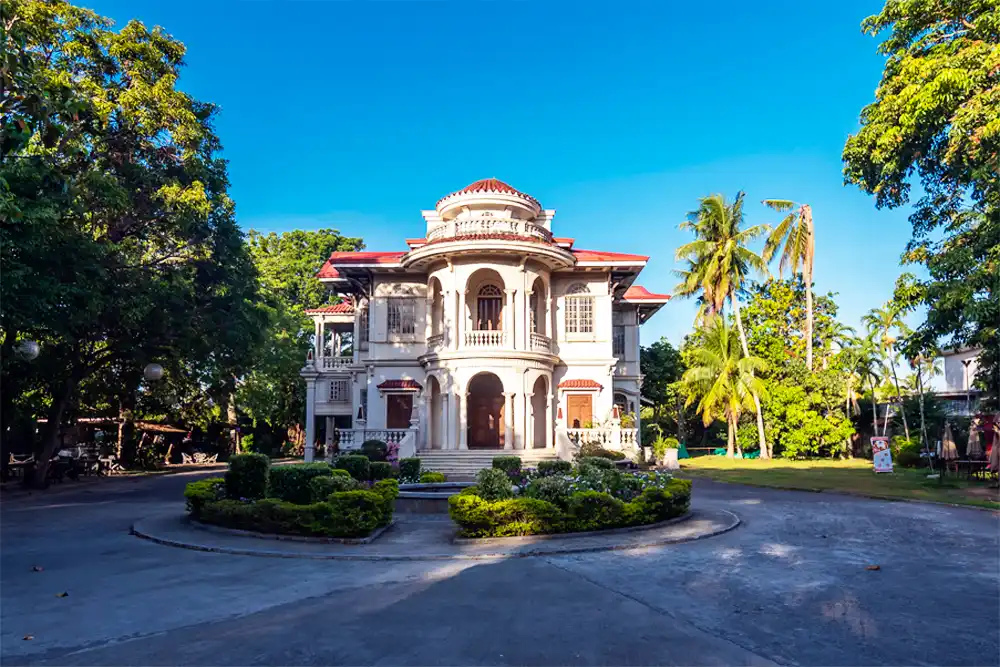
Another famous historical landmark in the Philippines is Molo Mansion, a popular historical building, also known as Yusay-Consing Mansion, which is well-preserved with Art Deco and neoclassical architectural design. You get to witness decorative carvings, balustrades and high ceilings. It is a popular spot for capturing photographs with Molo Plaza and the Church in the backdrop.
Location: Molo, Iloilo City, Iloilo
Year of Establishment: 1926
Entry Fee: No
Visitor Information
Historical sites scattered throughout the country attract numerous tourists, both domestic and international, to visit them. Tourists are fond of learning about the rich history, stories and legends associated with the famous historical places in the Philippines. However, before travelling to such sites, one must consider specific tips and practices to make their tour experience a pleasant one.
Best Time to Visit
The best time to visit the Philippines is during the dry season, which prevails between November and April. During this season, the weather remains cooler, and the chances of facing rain showers are lower. This allows you to explore different parts of the nation and learn about the great history of each destination.
Guided Tours and Fees
There are a number of historic places, some of which ask you to pay an entry fee, while some don't. If you are well acquainted with the destination, then you can wander around the place. However, if you want to learn about the different stories and events that took place in the past, you must hire a guide, who will offer you a guided tour.
Responsible and Respectful Tourism
Visitors travelling to these historic sites are expected to exercise caution and follow the rules to help preserve the beauty of these sites. Avoid touching or climbing ancient statues or structures, throwing away plastic or paper wrappers, or making excessive noise. You can also support the local communities by making purchases of locally sourced products.
Conclusion
Get ready to step inside the world of timeless elegance in the Philippines, filled with diverse culture and rich history. Travel to different corners of the nation to witness the magnificent architectural works and diverse architectural styles, which testify to the works of various time periods. Travel to the best historical places in the Philippines, as stated above, to gain a glimpse of both the modern and ancient architecture of the Philippines.
It will be hard to fit everything into one trip, and we guarantee you will want to return time and time again to this fascinating country. Let us be your travel partner, as we bring you amazing deals and exclusive offers when booking flight tickets to the Philippines.
FAQs
Some of the historical places to visit in the Philippines are Fort Santiago, Fort San Pedro, Intramuros and many more.
The best time to explore the historical sites around the Philippines is between the months of November and April, when the weather offers a pleasant experience.
Fort San Pedro is the oldest fort in the Philippines.
Read Also: Best Winter Destinations in Philippines | Travel Tips to Philippines | Marine Life in Philippines | Filipino Christmas Foods